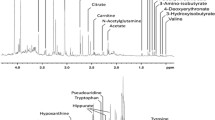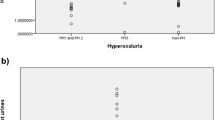Summary.
Proton Nuclear Magnetic Resonance (NMR) Spectroscopy of urine (as well as of other biological fluids) is a very powerful technique enabling multi-component analysis useful in both diagnosis and follow-up of a wide range of inherited metabolic diseases. Among these pathologies, cystinuria is characterised by accumulation in urine of four dibasic amino acids, namely lysine, arginine, ornithine and cystine; the last one, being only slightly water soluble, generates urolithiasis. The mentioned aminoacids can be detected in the urine NMR spectrum of cystinuric patients, the most abundant being the lysine (5 mM and over are often detected), whose typical signals become very high; arginine and ornithine are also usually detectable, although pathologic concentrations are lower (usually below 2 mM).
The proposed NMR technique is also suitable in monitoring the therapy with α-mercaptopropionylglycine (MPG), providing quantitation of several metabolites of interest in the follow-up of the pathology, like cystine, creatinine and citrate.
Similar content being viewed by others
Author information
Authors and Affiliations
Additional information
Received May 9, 1999; Accepted September 26, 1999
Rights and permissions
About this article
Cite this article
Pontoni, G., Rotondo, F., Spagnuolo, G. et al. Diagnosis and follow-up of cystinuria: Use of proton magnetic resonance spectroscopy. Amino Acids 19, 469–476 (2000). https://doi.org/10.1007/s007260070024
Issue Date:
DOI: https://doi.org/10.1007/s007260070024




